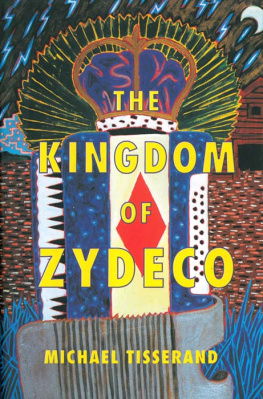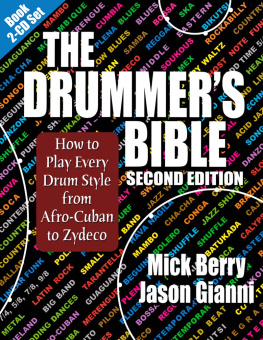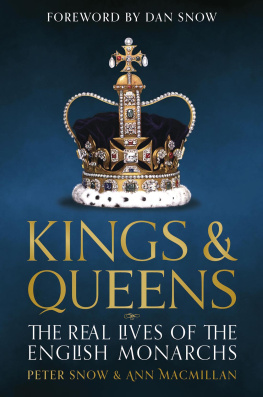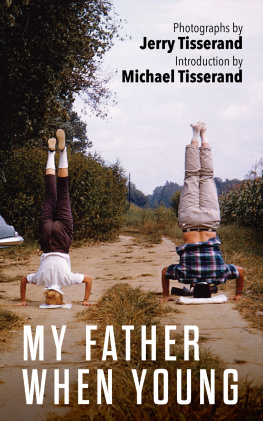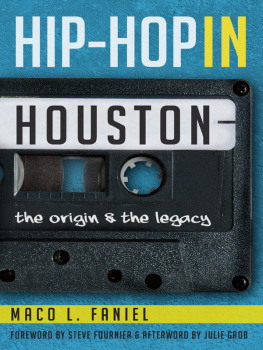
to Tami and Cecilia
for the house dances
Copyright 1998, 2011 by Michael Tisserand
All Rights Reserved. No part of this book may be reproduced in any manner without the express written consent of the publisher, except in the case of brief excerpts in critical reviews or articles. All inquiries should be addressed to Arcade Publishing, 307 West 36th Street, 11th Floor, New York, NY 10018.
Arcade Publishing books may be purchased in bulk at special discounts for sales promotion, corporate gifts, fund-raising, or educational purposes. Special editions can also be created to specifications. For details, contact the Special Sales Department, Arcade Publishing, 307 West 36th Street, 11th Floor, New York, NY 10018 or arcade@skyhorsepublishing.com.
Arcade Publishing is a registered trademark of Skyhorse Publishing, Inc., a Delaware corporation.
Rounder Records has released the companion CD to this book. Also called The Kingdom of Zydeco, it features recordings by major zydeco musicians and is available at fine record stores everywhere, or via mail order at 1-800-443-4727.
Visit our website at www.arcadepub.com.
10 9 8 7 6 5 4 3 2 1
Library of Congress Cataloging-in-Publication Data is available on file.
ISBN: 978-1-61145-615-8
CONTENTS

ACKNOWLEDGMENTS
"T HE WORD BOOK, it means that you got to roam around, zydeco saxophonist John Hart once told me. This particular book represents several years of roaming through zydeco communities in Southwest Louisiana, East Texas, and California. I owe the greatest debt of gratitude to the musicians, families, and others who warmly invited me into their homes and trusted me with their stories. Special thanks to Warren Geasar, Leona Ghavis, JoAnn Delafose, Al and Alice Lewis, and Cynthia Simien, for culinary kindnesses. It was always a good sign when the interviewing had to wait until gumbo was served.
Thanks to Keith Spera for first procuring me directions to Dog Hill, and for much help through the years. Thanks to Jan Ramsey and everyone else at OffBeat magazine, under whose auspices I first ventured out on the zydeco trail. Portions of this book also initially appeared in the pages of Living Blues, Louisiana Cultural Vistas, The Oxford American, and the Times of Acadiana. I am grateful to everyone at these publications for their interest and support.
For many favors, thanks to Charles Adcock, Lawrence Ardoin, Shane Bernard, Jason Berry, Scott Billington, Les Blank, Willie Davis, Glenn Dicker, Ted Fox, Herman Fusilier, David Gaar, Matt Goldman, Peter Gural-nick, Gary Hayman, Stuart Klipper, Dicky Landry, Mike Levier, Marc Lipkin, Tina Mayfield, Judith Meriwether, Francis Pavy, Tom Piazza, Jack Reich, Paul Senegal, Floyd Soileau, Chris Strachwitz, John Ullman, and Carolyn Ware; to Bob Kehew for drawing the map; to Ben Sandmel for sound advice and assistance over the years; to Lisa Richardson for ethnomusicological navigations; to Carolyn Durai for Creole and French transcriptions and translations; to Paul Hefti and Gorgie Richard for helping to uncover new information about Amd Ardoin; to Philip Gould for photos, suggestions, and breakfasts at Dwyers.
I owe my initial education in zydeco and Creole culture to the work of Barry Ancelet, Carl Brasseaux, John Braven, Michael Doucet, Ann Savoy, and Nick Spitzer, all of whom considerately answered my many queries. Thanks to Jared Snyder, for sharing both published and unpublished research concerning the life of Amd Ardoin and the history of the accordion; DJalma Garnier for his interview tape of Canray Fontenot; Junior Thomas and Frank Malbrough for the introduction to the world of trail rides; Wilbert Guillory, Liz Savoy, and Paul Scott of the Zydeco Festival; Kermon Richard at Richards Club; Sid Williams at El Sid Os; Tony Gradney at Slims Y-Ki-Ki; John Blancher at Mid-City Lanes; and Don Cravins of the Zydeco Extravaganza.
For help with photographs thanks to: Johnny Allan, Brett Bonner, Claude Boudreaux, Josie Breger, Tim Cape, JoAnn Delafose, Andrus and Michelle Espre, Philip Foster, Jean Hangarter, Cilia Huggins, Linda Keenan, Michael Kieffer, David Kurtz, Al Lewis, Alice Lewis, Hazel Lewis, Robin May, Barbara Roberds, Joseph A. Rosen, Scott Saltzman, Ann Savoy, Michael P. Smith, Jack Vartoogian, Linda Vartoogian, and Brian Ashley White.
Many thanks to everyone at the Louisiana Endowment for the Humanities, which funded part of my research. I am especially grateful to the endowments director, Michael Sartisky, for encouraging me to request an interview from Canray Fontenot. Thanks also to the staffs at the Archive of Folk Song at the Library of Congress, the Louisiana State Museum, and the Lafayette Convention and Visitors Center.
The benevolent Bob Mugge shared his interview tapes from his movie The Kingdom of Zydeco and if that wasnt enough, he even let me make off with his title. Thanks to Richard McDonough, whose redoubled efforts brought this book to the dance. And many thanks to the good folks at Arcade. My editor, Tim Bent, was always there with help and direction. Ann Marlowe and her purple pencil also made this a better book.
Thanks to my mother and father, who first taught me to read and write, and then took me on family trips to New Orleans; to Tami, for encouraging a career in writing and then riding out the consequences; to Cecilia, for her inestimable contributions to the final weeks of editing.
Lastly, during the course of my work zydeco lost some of its truest friends and practitioners, each of whom generously gave of their time to this project. Thank you to John Delafose, Canray Fontenot, Lee Lavergne, Anderson Moss, Rockin Sidney Simien, Doris McClendon, and Beth Verret. Your lives and contributions are remembered.
FOREWORD
M Y FIRST ANCESTOR to come to America was named Jean-Baptiste Tisserand. When he disembarked in New Orleans, it was 1840, and the city was infested with yellow fever. Jean-Baptiste stayed for several years, finding work burying the dead in trenches. Then he moved north.
I was born in Indiana not a kingdom of rubboards and French accordions. It was 1983 when I first moved to New Orleans. I was twenty years old and I wanted to see Mardi Gras. Then one Thursday night, I followed a French Quarter musicians hand-drawn map to the Maple Leaf Bar, where John Delafose and the Eunice Playboys were holding court.
Walking into the Maple Leaf was like being transported to another place and time. The music glanced along the tin roof and crashed against my confused ears: Delafose was singing in French and playing accordion, his son Geno was on drums, and a nephew named Jermaine Jack was loudly striking a metal washboard that hung from his shoulders. Before that night I had always associated the accordion with Lawrence Welk, washboards with washing, and French with France. While my ears took in the new sounds, my eyes were dazzled by the sight of couples whirling under ceiling fans, turning in graceful waltzes and intricate two-steps. It was my introduction to the kingdom of zydeco.
Though I didnt know it then, this was a significant time in zydeco. The music was beginning to be regularly heard in dance venues outside its home communities in rural Louisiana (about a two-hour drive west of New Orleans), East Texas, and California. The scene in the Maple Leaf demonstrated how popular a sturdy, dance-oriented zydeco band no strobe lights or fancy choreography for John Delafose - could be with a new crowd. I watched the dancers and practiced my first steps in an empty corner on the tiled dance floor,

